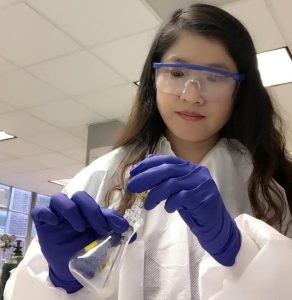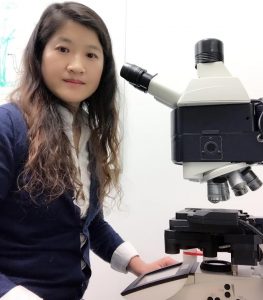Study Develops Predictive Model for Oil-Particle Aggregate Formation
– FEBRUARY 6, 2017
Scientists developed a new model to predict how much oil from a spill might bind to sediments or organic matter in the water column. The model, A-DROP, introduces a formula that accounts for oil stabilization by particles, particle hydrophobicity, and oil-particle size ratio. The model advances our understanding about the natural removal of oil and contributes knowledge towards development of oil spill mitigation techniques that incorporate oil-particle aggregates. The researchers published their findings in Marine Pollution Bulletin: A-DROP: A predictive model for the formation of oil particle aggregates (OPAs).
When oil and particulate matter interact it creates oil-particle aggregates (OPAs), whose decreased buoyancy transports oil to the seafloor. Once particles adhere to an oil droplet’s surface, a barrier is formed that prevents the droplet from attaching to and coalescing with other droplets. Since an oil droplet’s surface area is limited, the space available for particles to interact with decreases as more particles adhere to the droplet’s surface. Models capable of accounting for the effects of particles on droplet surfaces are necessary to accurately predict OPA formation.
The team used previous studies to make informed assumptions about the way water column hydrodynamics affect the break up and coalescence of oil. Using equations for calculating OPA formation, collision frequency, stability, and the coating effects of particles on the oil droplet surface, the researchers created a formula that can determine oil-particle coagulation efficiency under various conditions. They incorporated the new formulation into their model, which showed good agreement when validated against existing experimental data.
Model simulations of OPA formation in a typical nearshore environment suggested that increased particle concentration in the swash zone (the turbulent water layer that washes onto the beach) would increase the oil-particle interaction process. However, the amount of oil trapped in the OPAs did not correspond to the increased particle concentration, and the team determined that only a small increase in oil trapping rates can be expected.
“The model results might explain why oil [from the Deepwater Horizon spill] persisted visually near shorelines that have sand grains in them as opposed to fine sediment shorelines, such as those in Louisiana,” explained study author Michel Boufadel. He continued, “Thus, if you are in a community with fine sediments in the beaches, you might underestimate the amount of oil that reached your shorelines.”
This study is the first attempt at developing a coagulation efficiency formula based on particle coating mechanisms. “Our study started from the microscopic scale (i.e., not only observation), and predicted the behavior, and then we compared to data,” said Boufadel. “The study was numerical, but we are currently using confocal microscopy to understand how particles attach to oil, and the preliminary findings seem to support the conceptual framework of the A-DROP model.”
The researchers noted that further experimental and modeling studies are needed to continue improving the model’s predictive capability.
Data are publicly available through the Gulf of Mexico Research Initiative Information & Data Cooperative (GRIIDC) at R4.x259.190:0008.
The study’s authors are Lin Zhao, Michel C. Boufadel, Xiaolong Geng, Kenneth Lee, Thomas King, Brian Robinson, and Faith Fitzpatrick.
************
This research was made possible in part by a grant from the Gulf of Mexico Research Initiative (GoMRI) to Dispersion Research on Oil: Physics and Plankton Studies II (DROPPS II). Other funders include the Department of Fisheries and Ocean Canada (Contract No. F5211-130060).
The Gulf of Mexico Research Initiative (GoMRI) is a 10-year independent research program established to study the effect, and the potential associated impact, of hydrocarbon releases on the environment and public health, as well as to develop improved spill mitigation, oil detection, characterization and remediation technologies. An independent and academic 20-member Research Board makes the funding and research direction decisions to ensure the intellectual quality, effectiveness and academic independence of the GoMRI research. All research data, findings and publications will be made publicly available. The program was established through a $500 million financial commitment from BP. For more information, visit https://gulfresearchinitiative.org/.
© Copyright 2010-2017 Gulf of Mexico Research Initiative (GoMRI) – All Rights Reserved. Redistribution is encouraged with acknowledgement to the Gulf of Mexico Research Initiative (GoMRI). Please credit images and/or videos as done in each article. Questions? Contact web-content editor Nilde “Maggie” Dannreuther, Northern Gulf Institute, Mississippi State University (maggied@ngi.msstate.edu).







